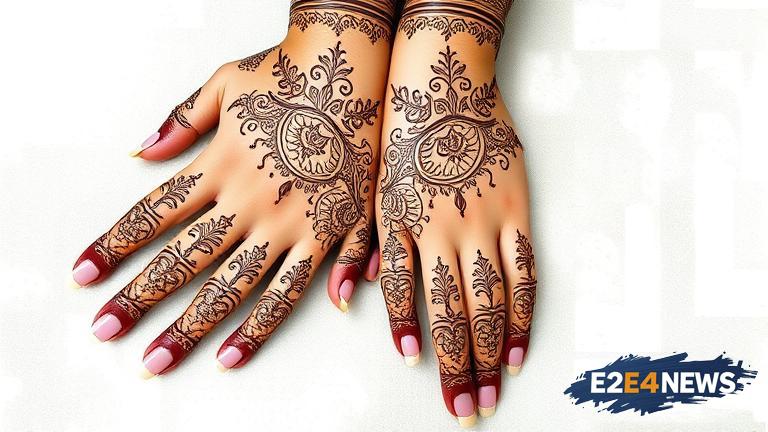The traditional art of bridal henna has been a cornerstone of wedding celebrations in many cultures, particularly in South Asia and the Middle East. For centuries, henna has been used to adorn the hands and feet of brides, symbolizing good luck, prosperity, and happiness. However, in recent years, there has been a shift towards reimagining and reinventing this ancient tradition. Modern brides are now seeking unique and personalized henna designs that reflect their individuality and style. This has led to the emergence of a new generation of henna artists who are pushing the boundaries of traditional designs and techniques. With the use of social media, brides are now able to discover and connect with henna artists from around the world, gaining access to a vast array of designs and inspiration. The rise of minimalist and delicate henna designs has also become increasingly popular, as brides opt for more subtle and understated looks. In addition to traditional henna, many brides are now incorporating other forms of body art, such as glitter and gemstones, to add an extra touch of glamour to their wedding day look. The use of henna as a form of self-expression and empowerment has also become more prevalent, with many brides viewing it as a way to connect with their cultural heritage and celebrate their individuality. Furthermore, the henna industry has seen a significant increase in demand for vegan and cruelty-free henna products, as brides become more conscious of the environmental and social impact of their choices. As a result, many henna artists are now offering eco-friendly and sustainable options, using natural ingredients and minimizing waste. The evolution of bridal henna has also led to the creation of new and innovative products, such as henna-infused skincare and haircare products. These products are designed to nourish and moisturize the skin and hair, while also providing a range of benefits, from reducing inflammation to promoting hair growth. In conclusion, the art of bridal henna is undergoing a significant transformation, driven by the desires of modern brides to express themselves and connect with their cultural heritage in new and innovative ways. As the industry continues to evolve, it will be exciting to see how henna artists and designers respond to the changing needs and preferences of brides, while still honoring the traditional techniques and symbolism that have made henna such an enduring and beloved part of wedding celebrations. With its rich history and cultural significance, bridal henna is sure to remain an integral part of wedding traditions for generations to come. The future of bridal henna is bright, with endless possibilities for creativity, innovation, and self-expression.
